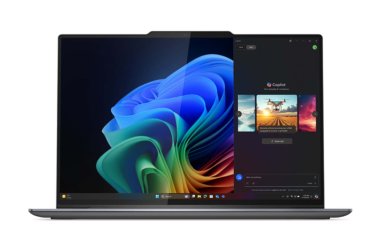 Intel on Tuesday announced its first smartphone customers, signaling the arrival of Intel Inside smartphones after years of uphill struggle by the chip maker.
Intel on Tuesday announced its first smartphone customers, signaling the arrival of Intel Inside smartphones after years of uphill struggle by the chip maker.
Lenovo and Motorola will release smartphones based on Intel’s upcoming Atom chips code-named Medfield, said Paul Otellini, Intel’s CEO, during a keynote address at the Consumer Electronics Show in Las Vegas.
“The best of Intel computing is now coming to smartphones,” Otellini said.
A Lenovo K800 smartphone demonstrated on stage during the keynote will be the first with Intel’s x86 chip. The K800 has a 4.5-inch screen that can display video at 720p resolution, and the smartphone is powered by an Atom Z2460 chip, which runs at 1.6GHz. It will first come to the China market via China Unicom in the second quarter this year. It will be based on the Lenovo LeOS user interface.
Intel also announced a multi-year, multi-product announcement with Motorola which will cover smartphones and tablets. The Motorola phone will be released in the second half of this year, though the company didn’t announce whether it would ship worldwide.
“We will have devices and carrier validation this summer,” said Sanjay Jha, CEO of Motorola Mobility, during an appearance at the keynote. The product launches will be shortly after that.
Intel executives on the sidelines assured that the smartphones with Intel chips will surely ship this year. Intel in 2010 showed an LG smartphone based on the earlier Atom chip code-named Moorestown, but the device never reached customers.
The customer announcements are a big breakthrough for Intel, which so far had fallen flat in its attempts to enter the smartphone market. Intel’s earlier Moorestown chips were considered power hungry, which led LG to scrap the first planned Intel-based smartphone. Intel also partnered two years ago with Nokia to develop the Linux-based MeeGo OS for smartphones, but Nokia abandoned the effort and adopted Microsoft’s Windows Phone OS for smartphones. Intel is now backing Google’s Android OS after merging MeeGo into the Tizen OS.
The Intel smartphone chip will be competitive on power and excel in performance, said Mike Bell, vice president and general manager of Intel’s mobile wireless group, during an interview. Smartphones with the current Z2460 chip will provide battery life of up to eight hours on a 3G voice call, six hours of high-definition video decode, five hours of 3G browsing, and a standby time of 14 hours.
The Atom chip Z2460 chip has dense power management to deliver high performance while consuming less power, Bell said. The chip’s operation will depend on the performance needed; the chip can deliver a burst in performance which could burn more power and hurt battery, but also reduce power consumption when the performance isn’t needed, Bell said. The capability is particularly useful for tablets, which will also include Medfield chips, Bell said.
During the keynote Bell showed a reference design of an Atom Z2460 smartphone with a 4-inch screen and an 8-megapixel camera. The phone can play back high-definition video and could include NFC (near-field communications) capabilities. The Intel reference design smartphones outperform current phones on the market in applications like browsing, Javascript and graphics, Otellini said during the keynote.
The handset establishes Intel as a legitimate competitor to ARM, whose chips go into most smartphones. But while a door has opened for Intel, it faces many challenges, including software and adoption issues.
There are some applications in Android Market with native code to run on ARM, but Intel is trying to tackle that challenge, Bell said.
“We will be shipping to our OEMs… some Intel technology that will let the majority of those applications to run without modification on our platform as well,” Bell said.
Analysts have said Intel’s chips will get more power efficient as it advances its manufacturing technology, which is when it could pose a serious threat to ARM’s dominance. The Z2460 chip is made using the 32-nanometer process. Intel could bring big power savings to smartphone chips with the 22-nm process, when 3D transistors could reach smartphones. Intel’s initial chips made using the 22-nm process are already being shown at CES in laptops.
While Intel is throwing a lot of financial muscle behind the development of smartphones, the company has seen failures. Intel has tried to enter the TV industry multiple times, and its most recent attempt over the last two years was marred by a lack of interest in its products.
China is a good market, and having a relationship with Lenovo there provides a good entry point for Intel in the smartphone space, said Nathan Brookwood, principal analyst at Insight 64.
Having Motorola as a customer also helps, considering its large market presence.
But the big story is the chip itself, which is a good entry point for Intel into the smartphone market, Brookwood said.
“If that was an accurate representation of the performance it delivers, it’s a compelling story,” he said, adding that the Intel smartphone looked faster than his dual-core ARM phone.
Intel has a long road ahead to gaining acceptance, but the company can afford some stumbles. Intel has a lot of perseverance and the company will continue to slog in the market, Brookwood said.





